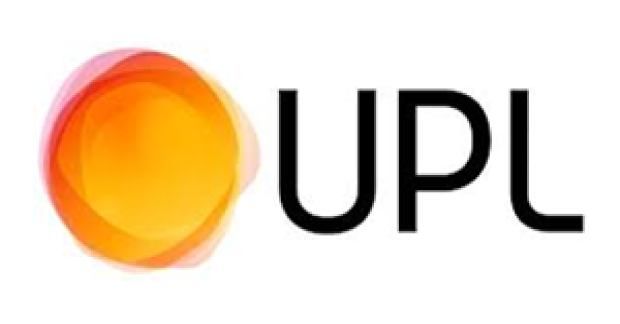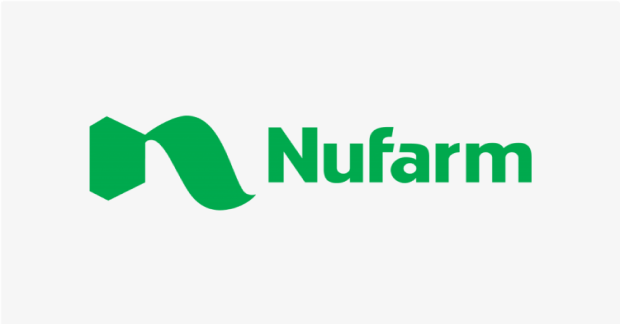Market Size of asia pacific molluscicide Industry
| Icons | Lable | Value |
|---|---|---|
|
|
Study Period | 2017 - 2029 |
|
|
Market Size (2024) | USD 279.3 Million |
|
|
Market Size (2029) | USD 343.6 Million |
|
|
Largest Share by Application Mode | Foliar |
|
|
CAGR (2024 - 2029) | 4.23 % |
|
|
Largest Share by Country | China |
|
|
Market Concentration | Low |
Major Players |
||

|
||
|
*Disclaimer: Major Players sorted in no particular order |
Asia Pacific Molluscicide Market Analysis
The Asia Pacific Molluscicide Market size is estimated at 279.3 million USD in 2024, and is expected to reach 343.6 million USD by 2029, growing at a CAGR of 4.23% during the forecast period (2024-2029).
279.3 Million
Market Size in 2024 (USD)
343.6 Million
Market Size in 2029 (USD)
0.60 %
CAGR (2017-2023)
4.23 %
CAGR (2024-2029)
Largest Segment by Application Mode
55.24 %
value share, Foliar, 2023
Foliar application is the most common and traditional way of applying molluscicides, which will effectively control the slugs and snails in various crops like cereals and oilseeds.
Largest Segment by Crop Type
55.59 %
value share, Grains & Cereals, 2023
The rise in crop losses by slugs and snails and higher cultivation areas of grains and cereal crops has increased the utilization of molluscicides and drove the market growth.
Largest Segment By Country
32 %
value share, China, 2023
Growing crop losses by Chinese slugs, which can feed on 500 crop types and higher cultivation areas have increased the use of molluscicides and helped in market growth.
Leading Market Player 1
10.80 %
market share, UPL Limited, 2022

UPL Limited is majorly concentrating on its molluscicide product portfolio to serve a wide range of crops, including cereals, oilseeds, fruits, vegetables, and other crops.
Leading Market Player 2
1.43 %
market share, Nufarm Ltd, 2022

Nufarm majorly concentrates on extending its product portfolio by introducing innovative molluscicide products for better control of slugs and snails in various crops.
Foliar application dominates molluscicide applications owing to its quick action
- Slugs and snails eat a wide array of broadleaf plants and grasses, including most crops and many weeds. They harm crops by killing seedlings, causing poor stands, and damaging leaves on young plants. Hence, the management of slugs is of utmost importance to get better yields in the susceptible crops. The Asia-Pacific molluscicide market was valued at USD 256.3 million in 2022 and is anticipated to reach USD 343.6 million by the end of the forecast period.
- Brown garden snails, giant African snails, rice field slugs, Chinese slugs, and keelback slugs are some of the major slug and snail species that can pose significant challenges to crop production in Asia-Pacific. Metaldehyde, iron phosphate, methiocarb, and sodium ferric EDTA are commonly used molluscicides.
- Molluscicides can be applied through different methods. In Asia-Pacific, foliar application dominated in molluscicide application, accounting for the largest market share of 54.8% in 2022. Foliar-applied molluscicides can provide quick control of mollusk populations. When sprayed onto the foliage, the molluscicides can be readily absorbed by the pests as they come into contact with it. This can lead to rapid mortality.
- Soil treatment accounted for the second largest market share of 30.4% of the Asia-Pacific molluscicide market in 2022. Recent advances in the development of enhanced wettable powders, granules, and bait formulations with improved stability, adherence, and attractiveness to snails and slugs will drive the soil treatment. The market is anticipated to register a CAGR of 4.1% during the forecast period (2023-2029).
Increased need for molluscicides in major crops like rice is driving the market
- The molluscicides market in Asia-Pacific witnessed steady growth during the historical period, with the region occupying the second-highest share of 28.3% by value of the global molluscicide market in 2022.
- Snail farming failed in Asia as snails destroyed the growing rice crops, causing severe economic losses as rice farms are the region's major source of food and income. The golden apple snail, Pomacea canaliculata, has been introduced to several Asian countries, where it has unexpectedly developed into a rice pest. Most farmers have resorted to chemical control, including the use of molluscicides, and have adopted integrated snail management practices.
- Rice is by far the most important crop throughout Asia, where 90% of the world's production and consumption occurs in this region. Molluscicides are mostly used in grains and cereals in Asia-Pacific as the region is the largest exporter and producer of staple grains such as rice. The segment occupied a share of 56.8% by value in 2022.
- Similarly, mollusk attacks on fruit crops have also been on the rise in the region, leading to farmers adopting chemical control methods to protect their crops. Fruits and vegetables occupied a share of 18.5% by value in 2022.
- Although control strategies are urgently needed in the region, researchers have suggested that farmers must have a sound knowledge of the ecology of snails to adopt the right application strategy for molluscicides. At the same time, initiatives by governments of various countries and innovations by manufacturers are expected to drive the molluscicide market in the region at a CAGR of 1.3% during the forecast period (2023-2029).
Asia Pacific Molluscicide Industry Segmentation
Chemigation, Foliar, Fumigation, Soil Treatment are covered as segments by Application Mode. Commercial Crops, Fruits & Vegetables, Grains & Cereals, Pulses & Oilseeds, Turf & Ornamental are covered as segments by Crop Type. Australia, China, India, Indonesia, Japan, Myanmar, Pakistan, Philippines, Thailand, Vietnam are covered as segments by Country.
- Slugs and snails eat a wide array of broadleaf plants and grasses, including most crops and many weeds. They harm crops by killing seedlings, causing poor stands, and damaging leaves on young plants. Hence, the management of slugs is of utmost importance to get better yields in the susceptible crops. The Asia-Pacific molluscicide market was valued at USD 256.3 million in 2022 and is anticipated to reach USD 343.6 million by the end of the forecast period.
- Brown garden snails, giant African snails, rice field slugs, Chinese slugs, and keelback slugs are some of the major slug and snail species that can pose significant challenges to crop production in Asia-Pacific. Metaldehyde, iron phosphate, methiocarb, and sodium ferric EDTA are commonly used molluscicides.
- Molluscicides can be applied through different methods. In Asia-Pacific, foliar application dominated in molluscicide application, accounting for the largest market share of 54.8% in 2022. Foliar-applied molluscicides can provide quick control of mollusk populations. When sprayed onto the foliage, the molluscicides can be readily absorbed by the pests as they come into contact with it. This can lead to rapid mortality.
- Soil treatment accounted for the second largest market share of 30.4% of the Asia-Pacific molluscicide market in 2022. Recent advances in the development of enhanced wettable powders, granules, and bait formulations with improved stability, adherence, and attractiveness to snails and slugs will drive the soil treatment. The market is anticipated to register a CAGR of 4.1% during the forecast period (2023-2029).
| Application Mode | |
| Chemigation | |
| Foliar | |
| Fumigation | |
| Soil Treatment |
| Crop Type | |
| Commercial Crops | |
| Fruits & Vegetables | |
| Grains & Cereals | |
| Pulses & Oilseeds | |
| Turf & Ornamental |
| Country | |
| Australia | |
| China | |
| India | |
| Indonesia | |
| Japan | |
| Myanmar | |
| Pakistan | |
| Philippines | |
| Thailand | |
| Vietnam | |
| Rest of Asia-Pacific |
Asia Pacific Molluscicide Market Size Summary
The Asia Pacific molluscicide market is experiencing steady growth, driven by the need to manage pests like slugs and snails that threaten crop production. These pests are particularly harmful to staple crops such as rice, which is a major agricultural product in the region. The market is characterized by the use of various chemical controls, including metaldehyde and iron phosphate, to protect crops from these invasive species. The region's reliance on molluscicides is further fueled by the increasing adoption of agrochemicals and the rising demand for high-value horticulture crops. The market is fragmented, with key players like American Vanguard Corporation, Arxada, Nufarm Ltd, PI Industries, and UPL Limited playing significant roles in shaping its landscape.
Molluscicides are primarily applied through foliar and soil treatment methods, with foliar application dominating due to its quick effectiveness. The market's growth is supported by advancements in product formulations that enhance stability and attractiveness to pests. Despite the challenges posed by rapidly reproducing species like the golden apple snail, which has become a significant pest in rice fields, the market is poised for expansion. Government initiatives and innovations by manufacturers are expected to further drive the market's growth, as farmers increasingly adopt integrated pest management practices to mitigate agricultural losses.
Asia Pacific Molluscicide Market Size - Table of Contents
-
1. MARKET SEGMENTATION (includes market size in Value in USD and Volume, Forecasts up to 2029 and analysis of growth prospects)
-
1.1 Application Mode
-
1.1.1 Chemigation
-
1.1.2 Foliar
-
1.1.3 Fumigation
-
1.1.4 Soil Treatment
-
-
1.2 Crop Type
-
1.2.1 Commercial Crops
-
1.2.2 Fruits & Vegetables
-
1.2.3 Grains & Cereals
-
1.2.4 Pulses & Oilseeds
-
1.2.5 Turf & Ornamental
-
-
1.3 Country
-
1.3.1 Australia
-
1.3.2 China
-
1.3.3 India
-
1.3.4 Indonesia
-
1.3.5 Japan
-
1.3.6 Myanmar
-
1.3.7 Pakistan
-
1.3.8 Philippines
-
1.3.9 Thailand
-
1.3.10 Vietnam
-
1.3.11 Rest of Asia-Pacific
-
-
Asia Pacific Molluscicide Market Size FAQs
How big is the Asia Pacific Molluscicide Market?
The Asia Pacific Molluscicide Market size is expected to reach USD 279.34 million in 2024 and grow at a CAGR of 4.23% to reach USD 343.60 million by 2029.
What is the current Asia Pacific Molluscicide Market size?
In 2024, the Asia Pacific Molluscicide Market size is expected to reach USD 279.34 million.

